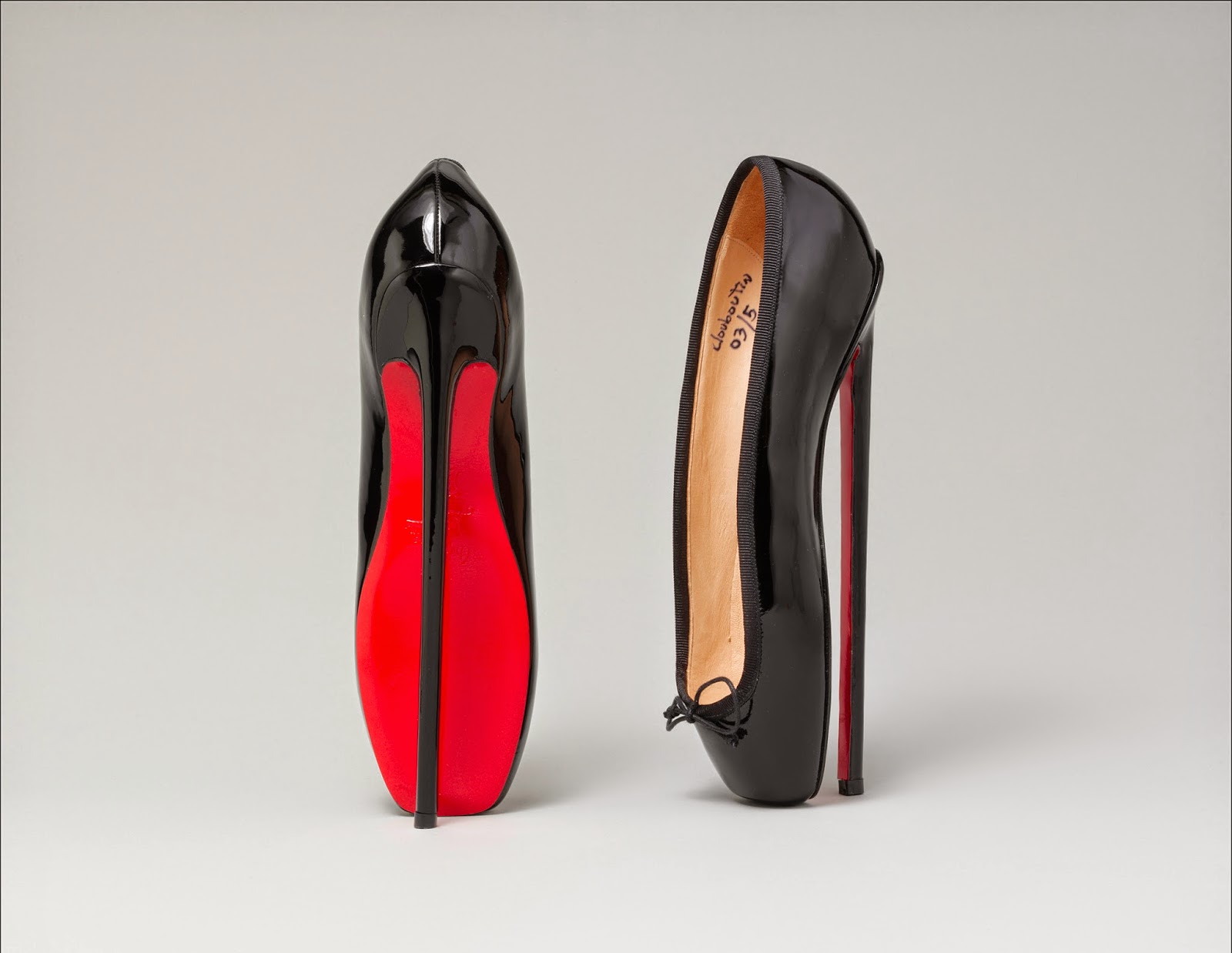 |
| Kontakthof at BAM, 2014. Photo: Julieta Cervantes |
Pina Bausch's Kontakthof is at the Howard Gilman Opera House through Nov 2. We asked Brooklyn Museum's chief designer, who designed the exhibition Killer Heels, his thoughts about high heels and the legendary German tanztheater choreographer/director.
By Matthew Yokobosky
 |
Christian Louboutin. Pumps, 2007. © The Metropolitan
Museum of Art. Image source: Art Resource, NY |
To see a performance by Pina Bausch is always a memorable experience. Even years later, they live on in your mind. You can even describe them to friends, which is unique among avant-garde theater works, because she used set and costume elements that can be easily identified: a waterfall, an enormous boulder, a mountain of carnations, long silk dresses, or high-heeled shoes, for example. It was Pina Bausch’s ability to give those familiar objects a twist of the unexpected that created those memories.
Going to see a performance where women wear high heels is, of course, not unique. But, I remember sitting at BAM one fall watching her company dance in high heels and thinking about how interesting it was to watch what was essentially a modern dance work, and yet none of the performers were barefoot or wearing “dance shoes.” And it was not ballroom. The way each performer slipped the heels on and off over the course of hours kept blurring the zone between modern dance, ballroom, and in a sense ballet, since the high heels gave the performers an incredible feeling of lift, balance, and an exquisite body shape that can only be created by raising the heel of the foot. I felt that she had substituted the high heel shoe for the ballet shoe.
Going to see a performance where women wear high heels is, of course, not unique. But, I remember sitting at BAM one fall watching her company dance in high heels and thinking about how interesting it was to watch what was essentially a modern dance work, and yet none of the performers were barefoot or wearing “dance shoes.” And it was not ballroom. The way each performer slipped the heels on and off over the course of hours kept blurring the zone between modern dance, ballroom, and in a sense ballet, since the high heels gave the performers an incredible feeling of lift, balance, and an exquisite body shape that can only be created by raising the heel of the foot. I felt that she had substituted the high heel shoe for the ballet shoe.
 |
| Pina Bausch's Viktor. Photo: Ulli Weiss |
In the Brooklyn Museum’s current exhibition Killer Heels (on view through February 15, 2015) one could imagine Pina Bausch creating whole characters from different pairs of shoes. For example, Christian Louboutin’s limited edition Pumps (2007) appear to be ballet shoes from the front and have 7” heels in the back, and are likely impossible to wear. You could imagine a character onstage, sitting in a straight-backed chair, putting these pumps on, and requiring several people to help her walk. A non-verbal dialogue ensues.
 |
Roger Vivier. Evening Shoes, 1960.
© The Metropolitan Museum
of Art. Image source: Art Resource, NY
|
Matthew Yokobosky is the chief designer at the Brooklyn Museum, and recently designed Killer Heels: The Art of the High-Heeled Shoe. Earlier in his career, Yokobosky won a Bessie award for Outstanding Set and Costume Design (Ping Chong’s Brightness).

No comments:
Post a Comment
Note: Only a member of this blog may post a comment.